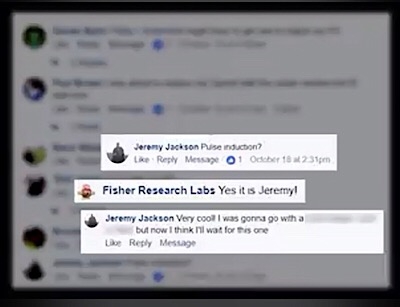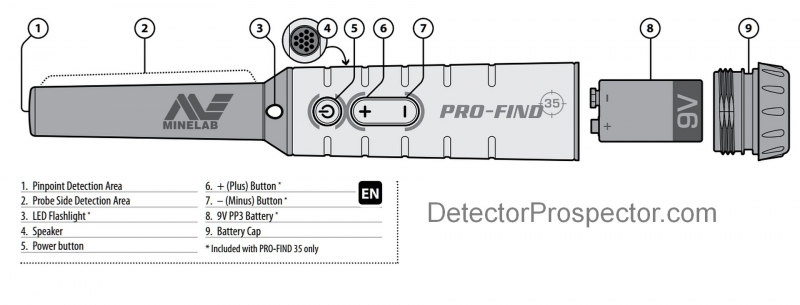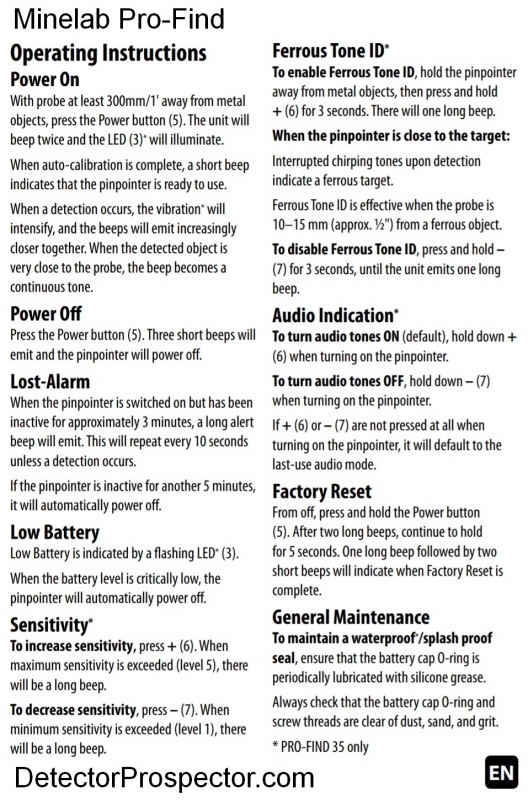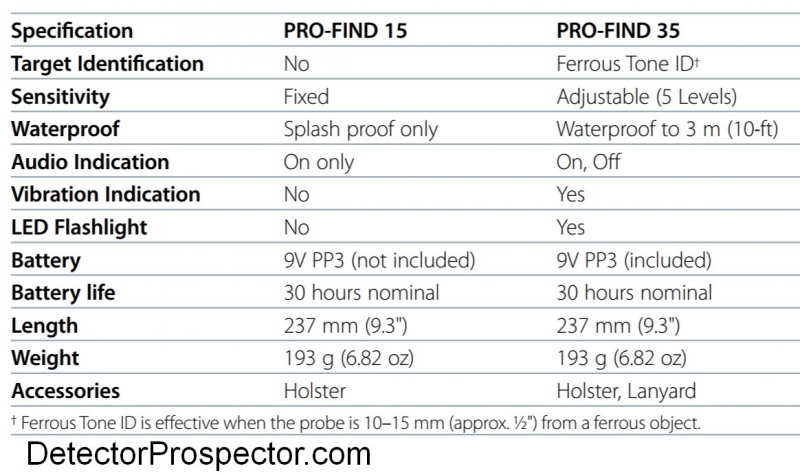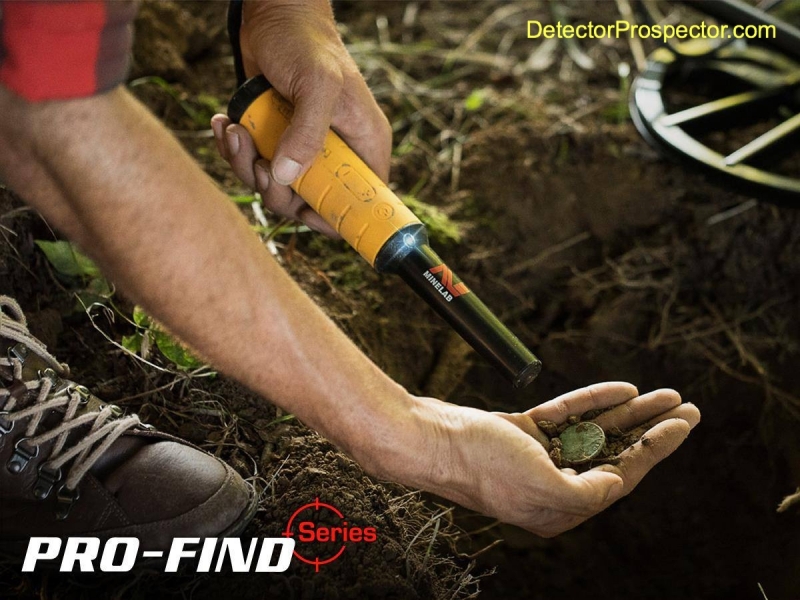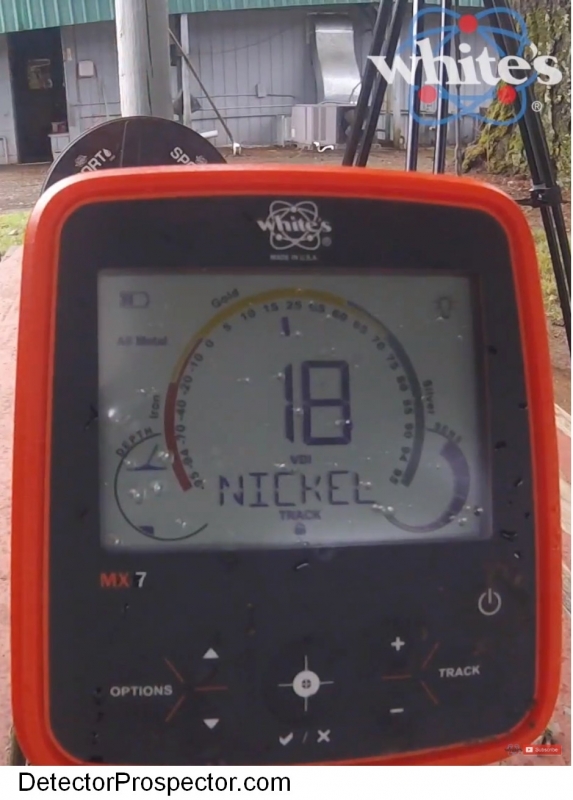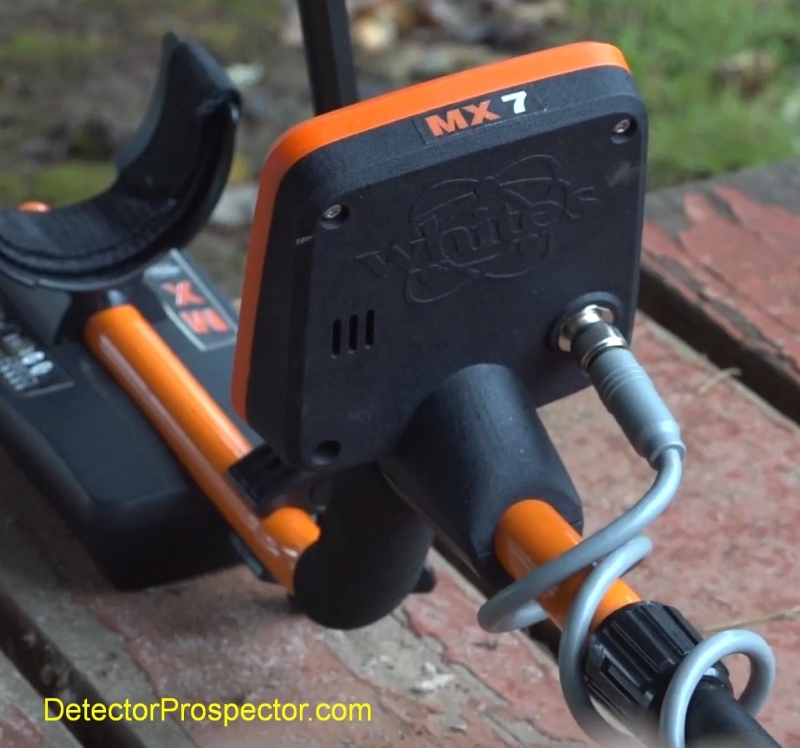-
Posts
19,793 -
Joined
Content Type
Forums
Detector Prospector Home
Detector Database
Downloads
Everything posted by Steve Herschbach
-
If you dry it out there should be no immediate harm done. If water got in just from being around a waterfall that will have to be sorted out. That should not happen - I think the pod is completely sealed or at least it should be. A poor headphone or coil connection on your part should still not allow water into the electronics.
-
Never heard of that one before. Loose batteries can cause detectors to shut off but the fact you are having to pull the battery pack and reinstall to reset it would seem to indicate more than that. If nobody chimes in here in the next day with an answer a call or email to White’s would be in order. I hope you get it sorted out soon. Nice finds!
-

Where In The World Is Klunker?
Steve Herschbach replied to Sourdough Scott's topic in Detector Prospector Forum
Nothing happened on the forum end. He simply stopped posting. I sent him a couple messages and got no answer, so I let it go. Hopefully all is well in his world. -
Whether people buy them or not is beside the point from a user perspective. That is why they are “optional”. In my opinion any detector benefits from as many coil options as possible, both large and small. That way you get to choose instead of having the choice forced on you.
-

When To Walk Away....
Steve Herschbach replied to Gbonus uralias's topic in Metal Detecting For Coins & Relics
Truly excellent responses - thanks gents! Here is my own effort though it just repeats many of the thoughts laid out above. Because I test so many detectors, I spend a huge amount of time finding a target in a park, then analyzing it with multiple detectors. I have fairly bad ground with high magnetite content. Coin signals tend to shift to ferrous signals at 6 - 7 inches. I also just use detectors a lot paying more attention to what the detector is doing than caring about what I am finding. My hours to finds per hour ratio is horrible when I do this, but interestingly enough I enjoy all this. I enjoy learning a new detector and trying to figure it out. I guess the point I am trying to make here, and it is related to your other thread on ground coverage, is that for the vast majority of people this is a hobby. That means it is supposed to be enjoyable. People enjoy detecting for many reasons. There is finding stuff obviously. There are tech types that hardly detect at all but obsess over inner workings. Some build their own detectors. Many people like me like trying and comparing different detectors. Some people move fast and recover shallow targets in volume. Some prefer taking it slow and going after deep targets. Style varies tremendously. Few of us will really make any money at this - we do it for fun. For me at least the learning part really is part of the fun. The sad part only comes in finding out just how limited all our detectors are and how little difference there is between top end models. Most have an edge of one sort or another, but it is a hair splitting edge. The old nail that fakes out one detector fakes out most of them, but one might be just a little better at discerning the trash. Just when you think you have the magic detector though, it fails on a target another succeeds on. There are targets that are clearly good. These are the one people cherry pick. There are the clearly bad targets. There is also that huge class of “iffy” targets. Ones at the edge of detection depth. Ones mixed with trash. Ones that sound good one way and not another. Many avoid “one way” targets as probable trash, but lots of those are just good items next to trash. I tend to think all targets should be dug, but that is usually impossible. So I look at it more as a time and patience thing. If time is limited, or my patience thin, I just go for more solid targets. You can pretty much just dig coins if that is your goal, with almost no trash, if you just go after solid, clean hits. The more time I have, the more patience I have, the more “iffy” targets I will dig. In the process I dig more trash - welcome to metal detecting. Sometimes in some well detected parks, you either dig those borderline targets or you may as well stay home as all the easy targets are gone. The more time you spend with a detector the better your skills get at recognizing good targets, but rest assured all of us run into targets where we say “I just don’t know”. It sounds good one way and not another. If I have the time and patience, I dig it. If not, I move on. The area you dig also makes a difference. A ratty old threadbare lawn may tolerate more digging than a beautifully groomed section of a park. Some places I feel free to dig with abandon, and other places I may tell myself I am going in there and digging just ten targets, so I better pick the best I can. You just need to do whatever it takes to enjoy the process. I have been detecting for over 45 years now because I enjoy it. If you force yourself to do things you don’t enjoy you may not last long at detecting. Some people have limited time and only hunt easy dig areas like tot lots for recent drops, no real digging required. If you want old coins however the “iffy” target becomes your friend. They may more often than not turn out to be a weird rusted item, but they can also be some of the best finds left in old parks, etc. You simply have to accept that many will turn out to be junk. When it comes to gambling digging that iffy target is a pretty cheap roll of the dice! Some tips. Proper ground balance has a lot to do with target id accuracy at depth. And high gain/high sensitivity levels make target id less stable and tends to make some ferrous more prone to giving false signals. Although many people give up before their ear gets trained, hunting with full tones and no items rejected can paint a much more accurate audio profile of your target. For instance, a ferrous item may have mixed good and bad signals. If you have rejected the bad portion of the signal, all you hear is an intermittent good signal. Full tones will reveal the item as being mixed ferrous and non-ferrous tones. If there is anything you need when dealing with borderline targets, it is more information, not less. Running wide open full tones is the secret many people employ for dealing with troublesome targets. A compromise is possible with detectors like the 705. Set for full tones (the meter says 99 but I think it is actually 28 tones) and notch out any segments you please, like ferrous. Now, when you get that borderline target, hit the “All Metal” button to open up all the target id tones. This will take a high tone squeaker and reveal that it really is a ferrous target generating a few high tone spikes. -
Welcome to the forum!
-

Lets Talk Dive Gear!
Steve Herschbach replied to sjmpainter's topic in Gold Panning, Sluicing, Dredging, Drywashing, Etc
I was normally good down to about 15 degrees. As Bob notes somewhere in that region the creek starts freezing from the bottom up, with slush building up behind rocks and on foot valves. The big surprise is all that suction will not pull the ice crystals through the foot valve. They hit the screen and stick. Suction gets weak and you look and there is a ball of slush over the foot valve. Sluice boxes start freezing up even while running. The exact temp this all happens at is more dependent on water temperature than air temperature but obviously cold air temps are the trigger. Dry gloves help. Age does not. I think I would probably prefer a hot water setup these days. This is about SCUBA but is applicable Scuba Regulator Freezing Great buy on the drysuit - BARE makes good gear. -
Over ten years ago I was pushing pretty hard on the idea that high power pulse induction detectors would eventually find use for more than just nugget detecting. Relic hunters in bad ground seemed a particularly obvious situation where PI detectors could pick up where the VLFs left off. Daniel TN just made a great post over at Dankowski’s about the shift from VLF to PI, and how the PI use progressed up the power ladder from Garrett Infinium to White’s TDI to Minelab GPX. I ended up calling this Steve’s Law Of Target Depletion. The basic premise is that if high value targets exist, people will start with discriminating VLF detectors and dig the easy targets. However, knowing good finds remain, over time more trash is dug and more powerful detectors used. As long as any chance of a good find remains, this progression will ultimately deplete a good location of all targets, good and bad. Prospectors see this all the time. A location will start with trash and gold. VLFs cherry pick out the easy stuff. Then the “dig it all” troops go to work. Sooner or later you get to where just finding a target, any target, gets to be a challenge. Yet as long as a single target remains, good finds still might happen. If nothing else the trash can hide good targets lurking below, and so even trash remaining can be a good sign. You can never call a place detected out until no targets at all remain in the ground that can be found. And even then, a newer, more powerful detector may make the place come to life again, at least for a time.
-
The AT tolerates a faster swing speed than the 705. The 705 prefers a moderate or slower sweep speed. The main issue here however not knowing anything more is that I am guessing your friend has more experience with his detector. There is nothing that can make you more efficient at digging targets than digging lots of targets. It is a training thing. Sounds like he is cherry picking. Swinging like he is there are targets being missed, but it is about what you bring home, not what you miss. The reality whether you overlap or not each swing of the coil is covering ground and getting over potential targets. He is making quick dig decisions, no doubt also recovering target quickly, and is beating you by digging a larger volume of higher quality targets. Or he could just be lucky and on a roll. It happens. Personally, I usually am moving at anywhere from moderate to very slow speeds. I don’t like to rush. I don’t think getting a larger coil and “chasing” your friend is the answer. Work on your own technique and that means working at a pace that is comfortable for you. Don’t overanalyze targets. When in doubt just dig it. But do pay attention on every target to what the detector is telling you and when you get tricked make a mental note. With time and practice you will get better at it. Main thing I would do though is have this discussion with you friend and work with him a bit to see what it is exactly that he is doing differently than you, and whether emulating any of his techniques might help.
-

Saying Hello
Steve Herschbach replied to Gbonus uralias's topic in Metal Detecting For Coins & Relics
Welcome to the forum - hope you have lots of great finds to post soon! -
From http://www.dankowskidetectors.com/discussions/read.php?2,133529,133563#msg-133563 October 18 at 6:47am - Tim Mallory (VP Sales and Marketing at First Texas Products) “When we release it will knock your socks off and will likely have brothers and sisters quickly following... but we are committed to doing it right and we have had many set backs.. but THEY are coming.” Maybe in 2018?
-

CTX 3030 Back With A Vengeance
Steve Herschbach replied to scoopjohnb's topic in Metal Detecting For Coins & Relics
Thank you sir. I am glad the CTX found a good home, and I hope it puts lots of treasure in your pocket! -

White’s MX7 Ring Test Video
Steve Herschbach replied to Steve Herschbach's topic in White's Metal Detectors
The color is right for it. I think the last photo above probably gives the truest sense of the real color. The other images appear oversaturated. Not a bad looking detector but would prefer all black myself. Color is like rod and grip designs - can't please everyone! Kudos to White's for having something to actually sell within a short time. MX7 Specifications & Details Here -
From http://www.minelab.com/customer-care/product-notices?article=321022 Minelab PRO-FIND Series Pinpointers PRO-FIND Series Pinpointers assist in accurately locating targets at the point of extraction where a metal detector coil cannot fit. This results in smaller holes, less environmental disruption and faster target recovery time. The PRO-FIND 15 offers essential core pinpointer features and is designed for simplicity and ease of use. The PRO-FIND 35 provides premium level functionality in a fully waterproof design for the serious detectorist. Both models use VLF transmission and incorporate Minelab’s unique Detector Interference Free (DIF) technology. More details are available on the PRO-FIND Series web pages: PRO-FIND 15 PRO-FIND 35 Download the new PRO-FIND Series brochure here. Download the new PRO-FIND Series Getting Started Guide here. Read the Treasure Talk Blog "The new PRO-FIND 35 hits the spot!" by Mark Williams here. More blogs to follow soon. Further product details and product availability will be announced in the coming weeks. Watch the new PRO-FIND Series Introduction video here:
-

Minelab X-Terra Classic Information Summary
Steve Herschbach replied to Steve Herschbach's topic in Minelab X-Terra Forum
That is the theory. However, I and most prospectors hunt by ear and I know if the detector is drifting out of ground balance due to audio feedback. That is one of the major reasons to have a threshold while detecting. So for me at least the ground phase is something used rarely if at all. The target id number on the other hand I may want to eyeball with nearly every target, and squinting at the speedometer is annoying. I actually went with the F75 for a long time instead of the Gold Bug Pro and a primary reason for that was I preferred the target id number display while in all metal on the F75 versus the Gold Bug Pro. The drop from 19 kHz to 13 kHz is in theory not good but it really only affects birdshot and smaller targets. If you hate birdshot get the F75. If you like digging birdshot get a 19 hHz model instead! The only way I could hit birdshot with the F75 was to run the machine maxed out with the 3" x 7" elliptical concentric. The stock and other large coils will generally pass on it. You would think flipping the display to put the target id front and center while in all metal would be a trivial task, but when I lobbied for it I was told it is not as easy as switching two wires. -
-

Minelab X-Terra Classic Information Summary
Steve Herschbach replied to Steve Herschbach's topic in Minelab X-Terra Forum
That is the only reason I went with the Gold Bug Pro myself over the X-Terra 705. I really like target id information while in all metal. The 705 on the other hand has a decent iron mask function while in all metal. Very good but I lean towards the visual target id myself. Can't say that the phase info was ever any use to me however. I would prefer Fisher use that big number for the target id and put the phase number on the little "speedometer" instead. Bottom line for just looking for gold nuggets the First Texas 19 kHz models and the X-Terra 705 are a toss up. It is all the other features that a new detectorist should consider when trying to decide which way to go. My Steve's Picks are intended to give novices direction and as a rule all other things being equal I tend to recommend the most features for the least money. But with machines like the 705 and F19 / G2+ all going for under $500 now it is real hard to go wrong. It used to be the real bang for the buck was around $700 but everything just shifted down by a couple hundred bucks. -

Minelab X-Terra Classic Information Summary
Steve Herschbach replied to Steve Herschbach's topic in Minelab X-Terra Forum
The main problem with First Texas is branding and model confusion. As far as I know I am the main person bearing the “yeah, but the F19 has more features, better coil, costs less” drum. It is difficult explaining why a relic detector is really a gold detector. Fisher needs to drop the current basic Gold Bug, and release a Gold Bug Pro with 10” elliptical for $399 and put F19 at $499. With the X-Terra 705 at $499 I just don’t see the F19 as being worth a premium. The F19 / G2+ price decrease is supposedly temporary. If it becomes permanent I will revamp things again. That may happen as the Equinox introduction forces a price decrease across the board. -

White's New MX 7 Detector For 599.95
Steve Herschbach replied to Ridge Runner's topic in White's Metal Detectors
Grips and rods are just one of those things that will never please everyone. Personally I never had a problem with the White’s “Lazy S” grip so go figure. White’s MX7 Details & Specifications Here -
I will not only second that but I want to commend everyone who has participated in this thread. I watched as stuff like this can head off on a wrong tangent easily, with accusations, etc. The goal always on this forum is to educate and this thread has turned into a great example of how to go about doing just that. Thank you everyone!
-

Minelab X-Terra Classic Information Summary
Steve Herschbach replied to Steve Herschbach's topic in Minelab X-Terra Forum
This new lower price is so aggressive that there really is no competition if you are looking for a VLF gold prospecting machine loaded with extra features for a bargain price. It is so aggressive it shook up my latest Nugget Detector Guide and replaced the basic 19 kHz Gold Bug at $499 as a Steve's Pick. The Gold Bug is a great little detector, but it comes nowhere close to having the features of the X-Terra 705 at the exact same price. The most obvious difference is a Gold Bug comes with a 5" round DD coil for $499 whereas the 705 offers a choice of 9" round concentric or 5.5" x 10" DD coil. You also only get Ground Grab with the Gold Bug, whereas the X-Terra 705 offers Ground Grab, Manual Ground Balance, and even Automatic Ground Tracking with Tracking Offset. That just scratches the surface of what the X-Terra 705 offers at $499 and so it is now my pick for general purpose VLF good for gold prospecting.

